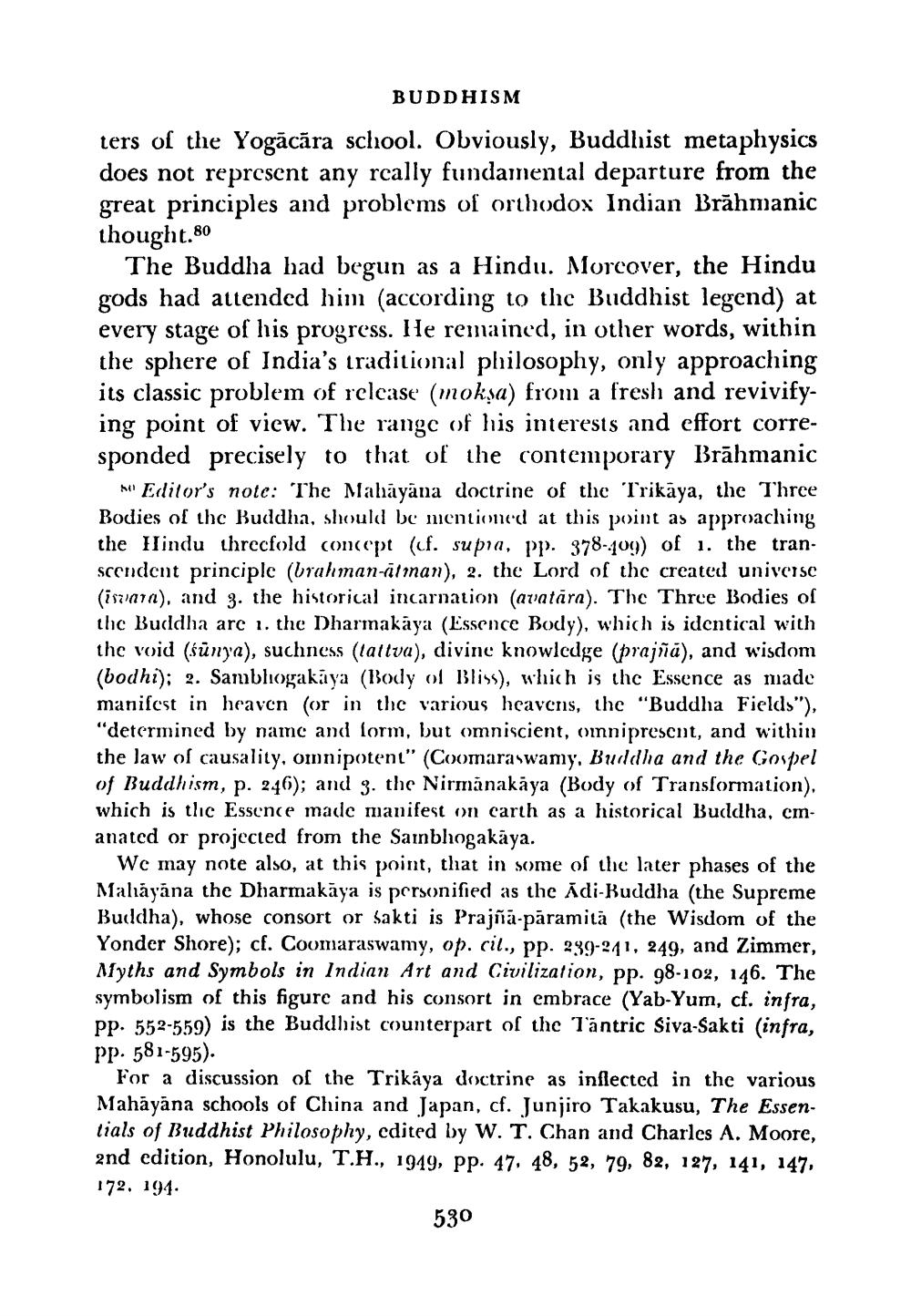________________
BUDDHISM
ters of the Yogacăra school. Obviously, Buddhist metaphysics does not represent any really fundamental departure from the great principles and problems of orthodox Indian Brahmanic thought.80
The Buddha had begun as a Hindu. Moreover, the Hindu gods had attended him (according to the Buddhist legend) at every stage of his progress. He remained, in other words, within the sphere of India's traditional philosophy, only approaching its classic problem of release (mokṣa) from a fresh and revivifying point of view. The range of his interests and effort corresponded precisely to that of the contemporary Brahmanic
Editor's note: The Mahayana doctrine of the Trikaya, the Three Bodies of the Buddha, should be mentioned at this point as approaching the Hindu threefold concept (cf. supra, pp. 378-409) of 1. the transcendent principle (brahman-atman), 2. the Lord of the created universe (isvara), and 3. the historical incarnation (avatāra). The Three Bodies of the Buddha are 1. the Dharmakaya (Essence Body), which is identical with the void (sunya), suchness (tattva), divine knowledge (prajñā), and wisdom (bodhi); 2. Sambhogakaya (Body of Bliss), which is the Essence as made manifest in heaven (or in the various heavens, the "Buddha Fields"), "determined by name and form, but omniscient, omnipresent, and within the law of causality, omnipotent" (Coomaraswamy, Buddha and the Gospel of Buddhism, p. 246); and 3. the Nirmanakaya (Body of Transformation), which is the Essence made manifest on earth as a historical Buddha, cmanated or projected from the Sambhogakaya.
We may note also, at this point, that in some of the later phases of the Mahayana the Dharmakaya is personified as the Adi-Buddha (the Supreme Buddha), whose consort or sakti is Prajñā-pāramità (the Wisdom of the Yonder Shore); cf. Coomaraswamy, op. cit., pp. 239-241, 249, and Zimmer, Myths and Symbols in Indian Art and Civilization, pp. 98-102, 146. The symbolism of this figure and his consort in embrace (Yab-Yum, cf. infra, pp. 552-559) is the Buddhist counterpart of the Tantric Siva-Sakti (infra, pp. 581-595).
For a discussion of the Trikaya doctrine as inflected in the various Mahāyāna schools of China and Japan, cf. Junjiro Takakusu, The Essentials of Buddhist Philosophy, edited by W. T. Chan and Charles A. Moore, 2nd edition, Honolulu, T.H., 1949, pp. 47, 48, 52, 79, 82, 127, 141, 147,
172. 194.
530




